Today’s Current Affairs: 30th March 2024 for UPSC IAS exams, State PSC exams, SSC CGL, State SSC, RRB, Railways, Banking Exam & IBPS, etc
Table of Contents
C-Vigil App : General Elections 2024
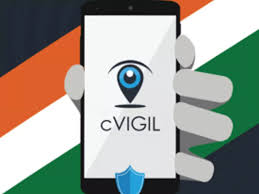
Since the announcement of General Elections 2024, over 79,000 complaints have been received on C-Vigil app.
- C-Vigil app is a mobile application developed by the Election Commission of India (ECI) to enable citizens to report violations of the Model Code of Conduct (MCC) during elections.
- It is user-friendly and easy to operate application, which connects vigilant citizens with the District Control Room, Returning Officer and Flying Squads Teams.
- By using this app, the citizens can immediately report on incidents of political misconduct within minutes and without having to rush to the office of the returning officer.
- As soon as the complaint is sent on the cVigil app, the complainant will receive a unique ID through which the person will be able to track the complaint on their mobile.
- Users capture audios, photos or videos in real-time, and a “100-minute” countdown for time-bound response to complaints is ensured.
- The app automatically enables a geo-tagging feature as soon as the user switches on their camera in the cVIGIL to report a violation.
- This means that flying squads could know the precise location of a reported violation and the image captured by citizens could be used as evidence in the court of law.
- It uses GPS to track the location of the violation.
- It allows users to capture the live incidents only.
- It has a feature to report the case of MCC violation anonymously.
Decision Support System : Air Quality Check

The Decision Support System (DSS), which identifies sources of pollution in Delhi’s air, will resume functioning from Sept this year with some new features
- Decision Support System is a numerical model-based framework to forecast Delhi’s air quality and sources of local and regional pollution which can impact the air. It is developed by Indian Institute of Tropical Meteorology (IITM) Pune.
- It provides quantitative information about:
- The contribution of emissions from Delhi and the surrounding 19 districts
- The contribution of emissions from 8 different emission sectors in Delhi
- The contribution from biomass-burning activities in the neighboring states
- The effects of possible emission source-level interventions on the forecast
- The system, which works only in winter and is stopped from March to August.
- The two models — System of Air Quality and Weather Forecasting And Research (Safar) and DSS — had temporarily stopped sharing data on air pollution for the country as there were differences between their forecasts and source contribution.
Group Of Friends:
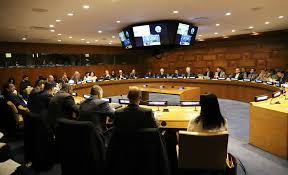
India, leading the Group of Friends (GOF) comprising 40 member states, convened a meeting to discuss strategies for strengthening legal frameworks against crimes targeting peacekeepers.
- India launched a new database hosted on the Unite Aware platform to record crimes against peacekeepers and monitor accountability efforts.
- The meeting underscores member states’ commitment, led by India, to uphold the safety and dignity of peacekeepers worldwide.
- The GOF was launched by India in 2022 to promote accountability for crimes against the Blue Helmets during its presidency of the UN Security Council.
- India, Bangladesh, Egypt, France, Morocco and Nepal are co-chairs of the GOF, which comprises 40 member states.
SIPRI Data : Highlights
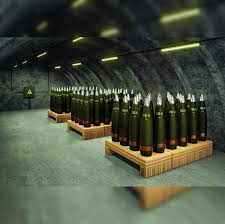
The latest data on international arms transfers from Stockholm International Peace Research Institute (SIPRI), India emerged as the leading arms importer globally during the period from 2019 to 2023.
- During this timeframe, India’s imports increased by 4.7% when compared to the period from 2014 to 2018.
Highlights of Recent SIPRI Data:
- Nine of the 10 biggest arms importers in 2019–23, including the top 3 of India, Saudi Arabia and Qatar, were in Asia and Oceania or the Middle East.
- Notably, Ukraine also rose as the 4th-largest arms importer globally during this period.
- The United States, the largest arms supplier globally, witnessed a 17% growth in arms exports between the periods 2014 –18 and 2019–23.
- Concurrently, France ascended to become the world’s second-largest arms supplier.
- Europe accounted for a third of global arms exports, with a strong military-industrial capacity.
- In contrast, Russia experienced a significant decline of more than half, with a decrease of -53%
- Although Russia remained India’s primary arms supplier, accounting for 36% of its arms imports, this marked the first five-year period since 1960-64 where Russian deliveries made up less than half of India’s total arms imports.
- India is now increasingly turning to Western countries like France and the USA, as well as boosting its domestic arms industry, to meet its growing defence needs.
X-Class Solar Flares:

Earth was recently hit by an X-class solar flare strong enough to ionize part of the planet’s atmosphere.
- Solar flares are large explosions that occur at the sun’s surface when twisted magnetic field lines suddenly snap, emitting large bursts of electromagnetic radiation.
- They are seen as bright areas on the sun and they can last from minutes to hours.
- In a matter of just a few minutes, they heat the material to many millions of degrees and produce a burst of radiation across the electromagnetic spectrum, including from radio waves to x-rays and gamma rays.
- Although solar flares can be visible in white light, they are often more readily noticed via their bright X-ray and ultraviolet emissions.
- The intense radiation emitted during a solar flare can affect satellite communications, disrupt radio signals and even pose a risk to astronauts in space.
- Additionally, the increased solar radiation can lead to geomagnetic storms, which may impact power grids and cause auroras (northern and southern lights).
- Flares are classified according to their strength. The smallest ones are B-class, followed by C, M and X, the largest.
- Similar to the Richter scale for earthquakes, each letter represents a ten-fold increase in energy output.
Cnemaspis vangoghi : New Species Of Lizard
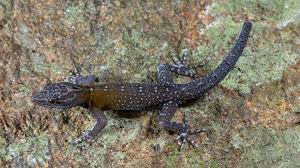
Scientists in India recently discovered a new species of lizard named Cnemaspis vangoghi.
- Cnemaspis vangoghi is a new species of lizard discovered from the Southern Western Ghats in Tamil Nadu.
- It is named for Dutch painter Vincent Van Gogh (1853–1890), as the striking colouration of the new species is reminiscent of one of his most iconic paintings, The Starry Night.
- It is described as a small-sized gecko and has a distinctive yellow head and forebody, adorned with light blue spots on the back.
- It prefers living among rocks and can occasionally be found on buildings and trees.
- Both species inhabit low-elevation, deciduous forests within the Srivilliputhur-Megamalai Tiger Reserve, adding to the five previously known endemic vertebrates of the region.
- These diurnal creatures are mainly active during the cooler hours of early morning and evening, predominantly found on rocks.
- Their restricted localities present an intriguing case of micro-endemism in low-elevation species.
- Micro-endemism refers to a phenomenon in ecology and biogeography where a species or a group of species are restricted to a very small geographic area, often on the scale of a few square kilometers or even less.
UNESCO Global Geoparks Network:
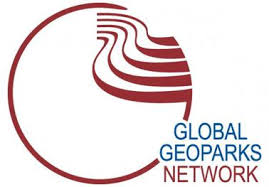
The UNESCO’s Executive Board has endorsed the addition of 18 sites to the UNESCO Global Geoparks network.
- UNESCO Global Geoparks Network are single, unified geographical areas where sites and landscapes of international geological significance are managed with a holistic concept of protection, education and sustainable development.
- The UNESCO Global Geopark designation was created in 2015 and recognizes “geological heritage of international significance”.
- These comprise a number of geological heritage sites of special scientific importance, rarity or beauty.
- The establishment of a UNESCO Global Geopark is a bottom-up process involving a strong local multiple partnership with long-term public and political support.
- It is not a formal legislative designation, though the defining geological heritage sites within a UNESCO Global Geopark must be protected under indigenous, local, regional or national legislation as appropriate.
- This status does not imply restrictions on any economic activity inside a UNESCO Global Geopark where that activity complies with indigenous, local, regional and/or national legislation.
- A UNESCO Global Geopark is given this designation for a period of four years after which the functioning of the site re-examined during a revalidation process.
- The selling or destruction of the geological value of a UNESCO Global Geopark or of material either from within the Geopark or from anywhere else in the world is not permitted.
- Global Geoparks Network:
- It is a non-profit International Association officially established in 2014 subject to French legislation
International Rice Research Institute : Rice Varieties With Low Methane Emissions

The International Rice Research Institute (IRRI) said that the focus of the IRRI-South Asia Regional Centre (ISARC) is to develop rice varieties with low methane emissions.
- International Rice Research Institute is an independent, nonprofit, research and educational institute, founded in 1960 by the Ford and Rockefeller foundations with support from the Philippine government.
- It is the world’s premier research organization dedicated to reducing poverty, hunger, and malnutrition through rice science.
- It aims to improve the health and welfare of those who depend on rice-based agri-food systems and promote and protect the environmental sustainability of rice farming for future generations.
- IRRI’s research for development is characterized by its collaborative nature: from alliances with advanced research institutes; through strong collaborations and capacity development with governments and national agricultural research and extension systems.
- The Government of India vide its Gazette notification recognises IRRI as an international organisation and accorded privileges and immunities (As per UN Privileges and Immunities Act 1947) that are applicable to United Nations (UN) organizations, for all offices and activities of IRRI in India including, for the IRRI South Asia Regional Centre.
- Headquarter: Los Banos, Philippines.
100 Years Of Vaikom Satyagraha:
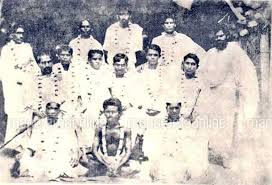
India’s one of the most supported and widely accepted protests, ‘Vaikom Satyagraha’, is celebrated its 100 years recently.
- Vaikom Satyagraha is the first anti-caste movement, as the pupil of the depressed class and untouchables were restricted from entering the temple.
- It was aimed to establish the rights of the oppressed classes to walk on the roads to the Shree Mahadeva Temple in Vaikom in Kottayam district.
- The issue of temple entry was first raised by Ezhava leader TK Madhavan in a 1917 editorial in his paper Deshabhimani.
- In AICC (All India Congress Committee) meeting in Kakinada 1923, K Madhavan along with Sardar Panikkar and KP Kesava Menon submitted a petition to the Travancore legislative council.
- The petition sought to grant the right to temple entry and worship of gods for all sections of the society irrespective of caste, creed and community. The movement was launched on 30th March 1924.
- The movement in the vicinity of Mahadev temple in Kottayam district of Kerala took place during 1924-1925.
INDRA App:
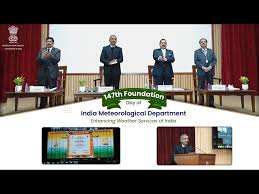
INDRRA app was launched as part of the World Meteorological Day celebrations.
- The Indian Naval Dynamic Resource for Weather Analysis (INDRA) app will help to disseminate weather related information and forecasts empowering optimal & quick decision making.
- The application has been developed by BISAG (Bhaskaracharya National Institute for Space Applications and Geo-informatics) in coordination with Directorate of Naval Oceanology and Meteorology, Indian Navy.
- BISAG is an Autonomous Scientific Society registered under the Societies Registration Act, 1860.
- It undertakes technology development & management, research & development, facilitate National & International cooperation, capacity building and support technology transfer & entrepreneurship development in area of geo-spatial technology.
- The organisation has three main domain areas: Satellite Communication, Geo-informatics and Geo-spatial technology.
- Nodal Ministry: Ministry of Electronics & Information Technology (MeitY), Government of India.
Onyx Supersonic Cruise Missile:

Russia’s Onyx supersonic cruise missile, which has frequently struck Ukrainian targets, is slated to get deadlier with a new target seeker.
- The P-800 Onyx, a supersonic medium-range cruise missile, is designed to combat surface ship groups, as well as to destroy ground targets in conditions of strong fire and electronic countermeasures
- Also known as Russian Brahmos, it can reach speeds of over 3,000 km/h, making it extremely difficult to intercept.
- Additionally, the missile operates at an altitude of 10-15 meters above land or water, further enhancing its stealth capabilities.
- The missile has a range of up to 300 kilometers in its default trajectory and a range of 120 km in a low-altitude trajectory.
- It can be launched from surface ships, submarines and land-based equipment.
- It is a self-guided munition, designed with the “shoot and forget” principle in mind.
- Unlike some other missiles that rely on extensive target data, the Onyx missile requires minimal information about its target to strike it successfully.




